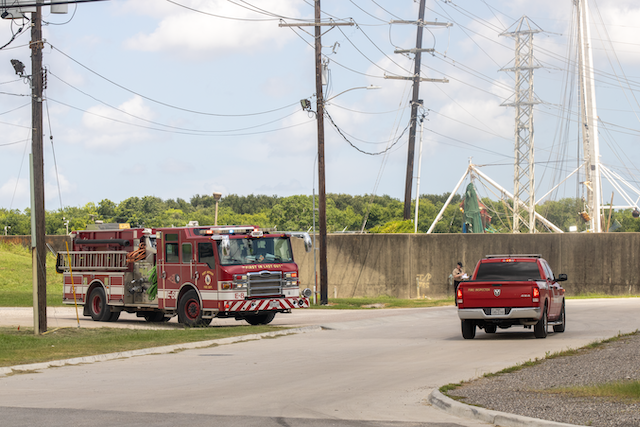DD7 continues to be in spotlight at board meeting
Published 5:21 pm Tuesday, October 17, 2017
By Lorenzo Salinas
The call for accountability in the aftermath of Harvey’s flooding continued at the Jefferson County Drainage District 7 meeting Tuesday.
During the District’s regular board meeting, former councilman John Beard was invited to speak about his concerns regarding DD7’s handling of floodwaters in August.
Beard wanted to know what caused the flood, particularly in hard-hit areas of the city like El Vista and Montrose.
“The mission of your organization is dealing with flood and drainage,” Beard told board members.
He then cited previous floods in the city’s history with hurricanes as evidence that not everything that could be done was being done to protect the city’s residents and industry.
“It’s not about finding blame, but finding solutions,” Beard said.
Trending
Beard latched on to the fact there were pumps that had run out of fuel during the flood.
“In my mind that should not have taken place.”
He said three pumps had run out of fuel not only due to rising rainwater but also due to the “inefficiency” of the pumping process.
As part of a solution toward better drainage, Beard asked the DD7 board to engage in a study whereby flood experts and county members would come together, form a task force and work something out to help ensure something like the Harvey flood would not happen again.
Beard said he knew they couldn’t stop a storm like Harvey from happening again, but the District could “make sure to mitigate the (floodwaters) so they’re not as bad as before.”
Taking a cue from the “water flows downward” issue brought up at the recent Port Arthur City Council meeting, Beard asked why water from Mid-County flows down through Port Arthur. He blamed areas like Nederland and Port Neches for the increased flooding in areas like Lake Arthur Drive and Jimmy Johnson Boulevard, where flooding was especially bad.
“Port Arthur can’t take all its water and other cities’ waters,” he said.
Beard called for a segregation of waters, where each city takes care of its own drainage issues and don’t let it out through Port Arthur city limits.
At the end of Beard’s piece, DD7 manager Phil Kelley told Beard he could see he did his research, but was only “fairly accurate” about a few things.
Kelley said he would like to get together with Beard and work out some of the “finer things” and looked forward to explaining the drainage process to him.
Board chairman Richard Beaumont said DD7 was actually in the process of setting up a series of town hall meetings to educate the public about the District.
Among other things, Kelley said the District has been “very proactive,” educating Beard on some of the projects and initiatives that DD7 has been a part of to better fulfill its mission.
Among them were large-scale studies funded by the U.S. Army Corps of Engineers to better improve its drainage infrastructure. Another was the current construction of another pump station next to the Alligator Bayou Pump Station that has been in the works for five years.
“We do not sit here trying to do the least amount of work,” Kelley said.
In other agenda items, DD7 approved tax abatements for Colonial Pipeline Company, LLC and Enterprise Refined Products Company, LLC.
The time period for each is six years and is expected to bring three and five permanent jobs to the area respectively with hundreds of jobs during the construction phase.
Tax abatement with Colonial would be 100 percent for years one and two; 80 percent for years three and four and 60 percent for years five and six. Tax abatement with Enterprise would be 100 percent for years one through four and 80 percent for years five through six.
Both periods would start in 2019 and end in 2024.
The District approved a payment of approximately $668,000 to Mason Construction for emergency hurricane flood protection levee repairs.
In other items, Aspect Energy, LLC was granted a permit for a three-inch HP gas pipeline beneath John’s Gully.
Total Petrochemicals and Refining USA, Inc. was granted a permit for removal of an existing overhead 12-inch petroleum pipeline in lieu of an underground 12-inch petroleum pipeline beneath Main C Canal.





